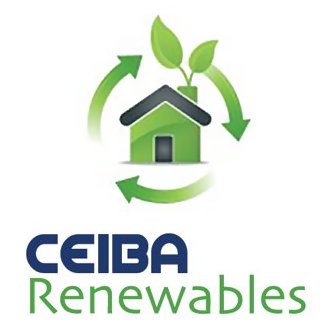Battery storage technology plays a vital role in enhancing the efficiency and sustainability of renewable energy solutions, especially Solar PV systems. As this space continues to grow and evolve, so does the range of terminology and concepts surrounding battery storage. Gaining a thorough understanding of these battery storage terms is essential in making informed decisions about your renewable energy solutions. At Ceiba Renewables, we provide design, consultancy, project management, and installation services that help our customers harness the potential of renewable energy, including both Solar PV and battery storage solutions.
In this article, we aim to demystify the terminology and concepts associated with battery storage, providing a comprehensive guide for those looking to expand their knowledge and make informed decisions about their renewable energy systems. We will cover essential terms, such as storage capacity, depth of discharge, cycle life, and load profile, as well as dive into the various types of battery technologies available. Additionally, we will discuss the compatibility of these battery storage systems with Solar PV installations, and underline the key factors to consider when selecting the best solution for your specific energy needs.
Join us as we navigate through the complex landscape of battery storage technology, empowering you with the knowledge and confidence to make smart, future-proof renewable energy decisions. By mastering this terminology, you will be better equipped to discuss your requirements and expectations with professional service providers like Ceiba Renewables, ensuring the perfect fit for your renewable energy goals.
Demystifying Battery Storage Terminology: A Comprehensive Guide
I. Fundamental Battery Storage Concepts
Understanding the basics of battery storage technology is essential for making well-informed decisions about your renewable energy system. Key concepts to grasp include:
- Storage Capacity: The storage capacity, typically measured in kilowatt-hours (kWh), refers to the maximum amount of energy that a battery can store. Higher storage capacities allow for better energy management and longer self-sustainability during periods of insufficient solar generation or grid outages.
- Depth of Discharge (DoD): Depth of Discharge is the percentage of a battery’s energy that can be utilised without negatively affecting its lifespan. For example, a battery with a 10 kWh capacity and an 80% DoD allows you to use 8 kWh of energy before needing to recharge.
- Cycle Life: The cycle life denotes the number of complete charge-discharge cycles that a battery can undergo before its capacity substantially decreases. Higher cycle life signifies longer battery life and better value for your investment.
- Load Profile: Load profile refers to the pattern of electricity usage within your household or business over time. Understanding your load profile enables you to choose a battery storage system best suited to your specific energy requirements.
II. Types of Battery Storage Technologies
There are several battery storage technologies available today, each with its unique characteristics, advantages, and disadvantages:
- Lead-Acid Batteries: An older technology, lead-acid batteries are well-established and widely used. They tend to have a lower upfront cost but may have a shorter lifespan and lower energy density compared to newer technologies.
- Lithium-Ion Batteries: Lithium-ion batteries have become increasingly popular thanks to their longer lifespan, higher energy density, and lighter weight. However, they generally come with a higher initial cost than lead-acid batteries.
- Flow Batteries: Flow batteries use liquid electrolytes to store energy. They offer a promising alternative to traditional battery storage technologies, with benefits such as longer cycle life and reduced environmental impact.
- Sodium-Ion Batteries: An emerging battery storage technology, sodium-ion batteries promise improved safety and cost-effectiveness compared to lithium-ion batteries, although they are still under development and not prevalent in the market.
III. Compatibility of Battery Storage Systems with Solar PV Installations
Battery storage systems can be a powerful complement to Solar PV installations, offering several advantages when paired together:
- Improved Self-Consumption: By utilising a battery storage system, you can store excess solar energy generated during daylight hours for use during times of insufficient solar generation, such as evenings and overcast days.
- Energy Independence and Grid Resilience: Combining battery storage systems like the Tesla Powerwall 3 with its Island mode feature along with Solar PV installations reduces reliance on grid electricity and promotes energy independence, providing resilience against grid outages and fluctuating energy prices.
- Enhanced Sustainability: Storing and utilising solar-generated energy not only reduces your carbon footprint but also improves your overall sustainability profile.
IV. Key Factors to Consider When Choosing a Battery Storage Solution
Selecting the most suitable battery storage system depends on a variety of factors:
- System Compatibility: Choose a battery storage solution that is compatible with your existing or planned Solar PV installation, taking into account factors like capacity, voltage, and communication protocols.
- Energy Requirements: Calculate your energy storage needs based on your load profile and consumption patterns, selecting a battery capacity that will accommodate your unique energy requirements.
- Budget: Consider your available budget for a battery storage system, balancing upfront costs with long-term considerations, such as maintenance expenses, cycle life, and future energy needs.
- System Scalability: Opt for a battery storage system that is scalable and can be expanded in the future as your energy demands evolve.
Empowering Your Renewable Energy Decisions with Battery Storage Knowledge
Understanding the terminology and concepts associated with battery storage technology is crucial for making smart, informed, and future-proof renewable energy decisions. As the renewable energy landscape continues to evolve, educating oneself about these critical terms will pave the way to a smooth and successful Solar PV and battery storage system integration.
Armed with this knowledge, you can confidently engage with professional service providers like Ceiba Renewables in meaningful discussions about your renewable energy goals, ensuring the perfect solution for your specific needs. Together, let us embrace the potential of advanced battery storage technology, contributing to a cleaner, more efficient, and sustainable future for all.

